Estimated time for reading: 8 min
Overhead Catenary Systems (OCS) are the most common practice for supplying electricity to electric trains. Provision of continues connection between pantograph and contact wire with the added necessity for low electrical wear and mechanical wear of collector strip is amongst the main challenges for engineers and researchers alike regarding the pantograph and catenary interaction.
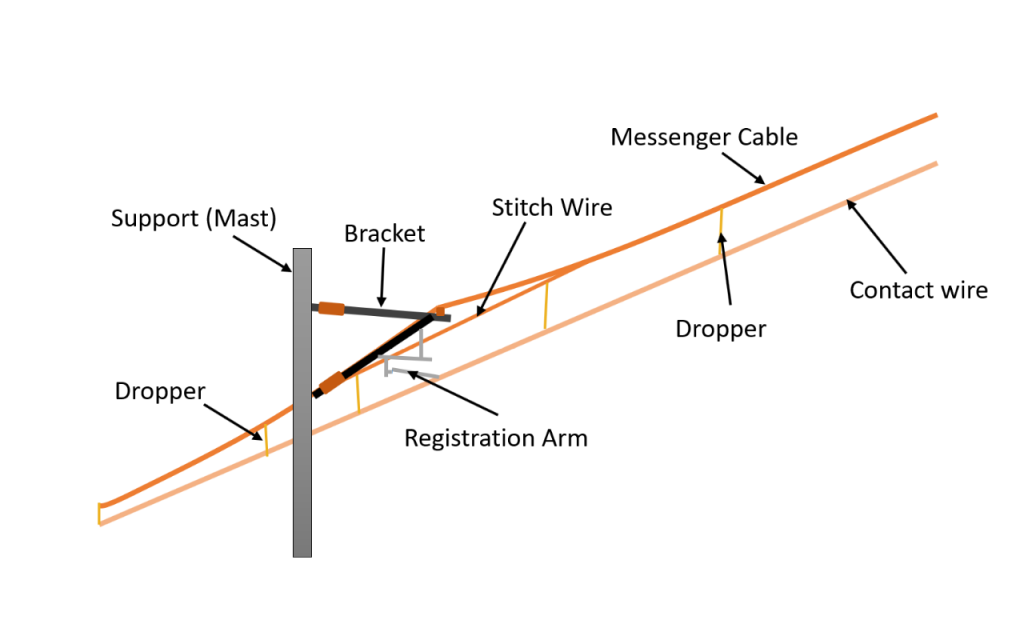
All elements within a catenary system can be considered as behaving linearly except its droppers. Catenary droppers exhibit high stiffness in tension but buckle easily in compression, hence they cannot be modelled as a linear spring. Our method of solution considers droppers as linear springs while in tension and if in compression it is also a linear component up to its limit for buckling. The limit for buckling for each dropper depends on its length.
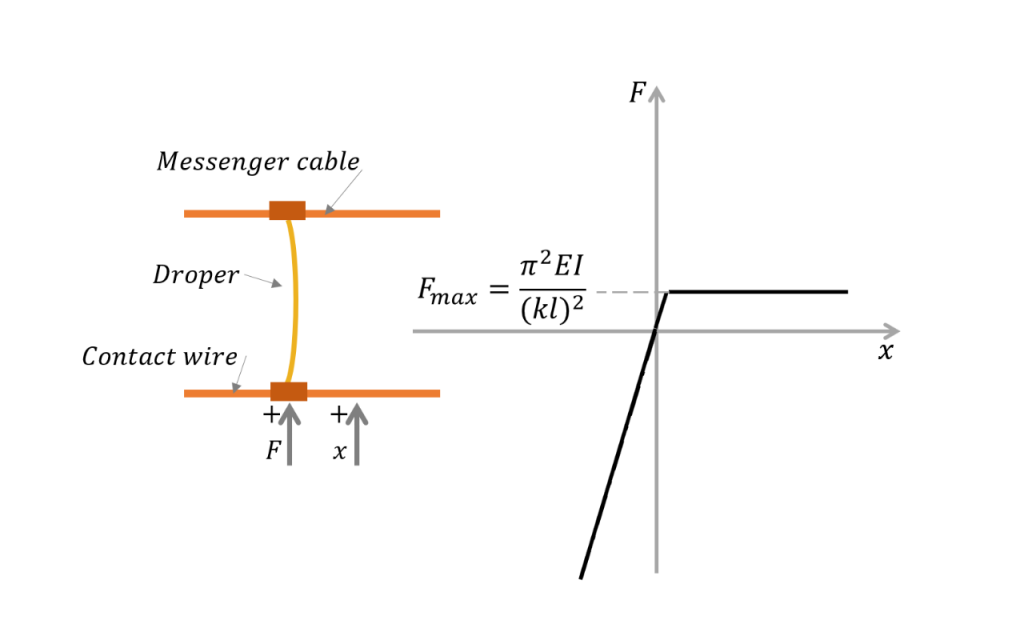
This nonlinearity has an amazing effect on improving contact quality of pantograph and catenary at last spans. In order to show this effect, the following problem is simulated.
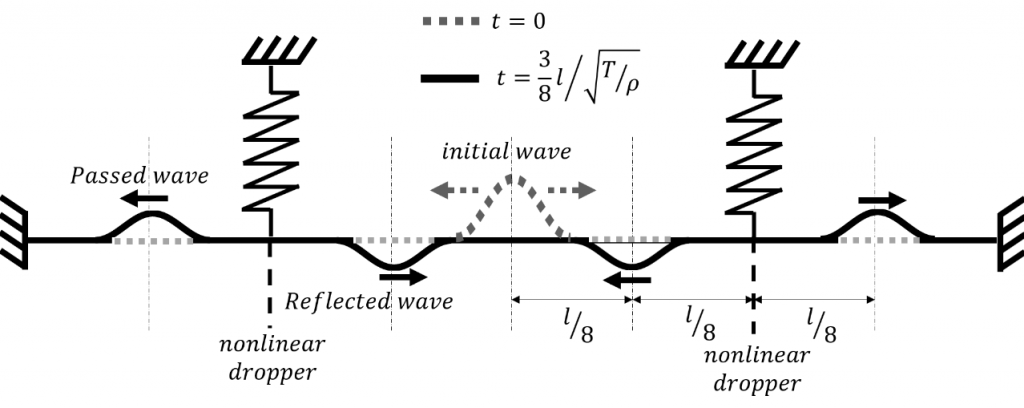
The effect of the presence and the location of the droppers (or the non-linear springs) on the passing acceleration wave in the contact wire is simulated and is presented in this section.
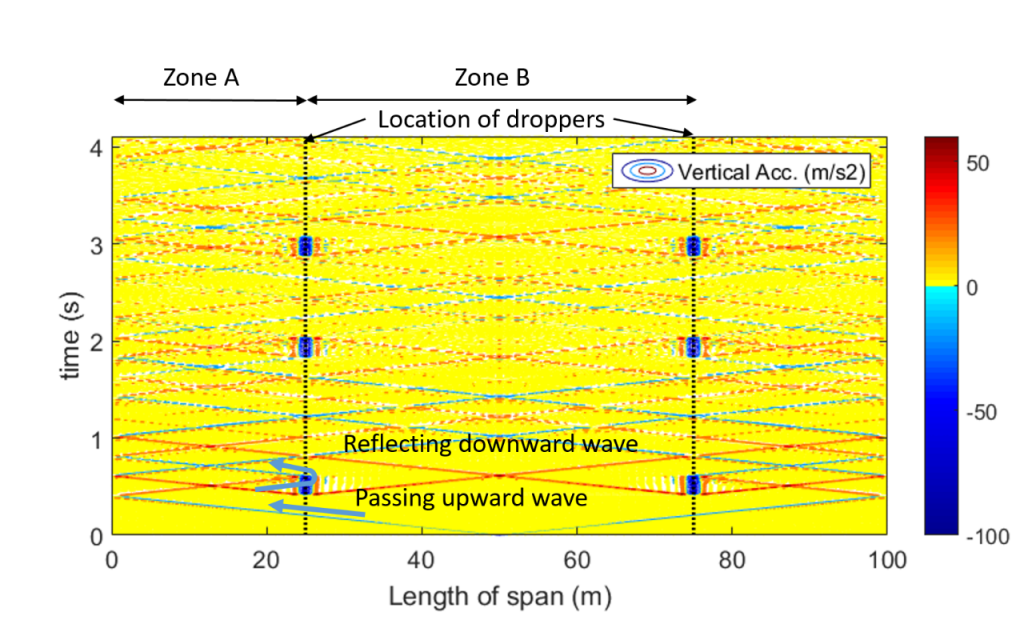
In this figure, the horizontal axis represents the length of the span and the vertical axis represents the time. The vertical marker lines that are drawn at 25 meters and 75 meters represent the locations of the droppers. An upward acceleration wave in the middle of the pan as the initial condition at the time (t=0.0) is considered. The results in this figure indicate that for real cases, a dropper (that slacks in compression) in a catenary system has an interesting behaviour when it faces upward waves. In fact, it acts as a rectifier because it lets an upward wave to pass through but when the same wave reflects from the boundaries with a reverse figure (a downward wave) the dropper acts as a highly stiff barrier and reflects the wave. The wave then needs to go to the boundary for a second time to have its figure reversed again to be able to pass through the dropper. This double passing of the waves happens between the boundaries and the closest dropper to the boundaries. This closest dropper is in the transient section (overlaps) of the contact wire and the pantograph actually does not touch such section. During such crossings and reflections, the energy of the wave dissipates in the contact wire and its boundary. Since all excited waves caused by a moving pantograph have upward direction, it is possible to claim that the slacking of the droppers reduces the acceleration disturbance in a zone of wire in contact with a pantograph and moves this disturbance to zones of wire that never have a connection with the pantograph (zone A).
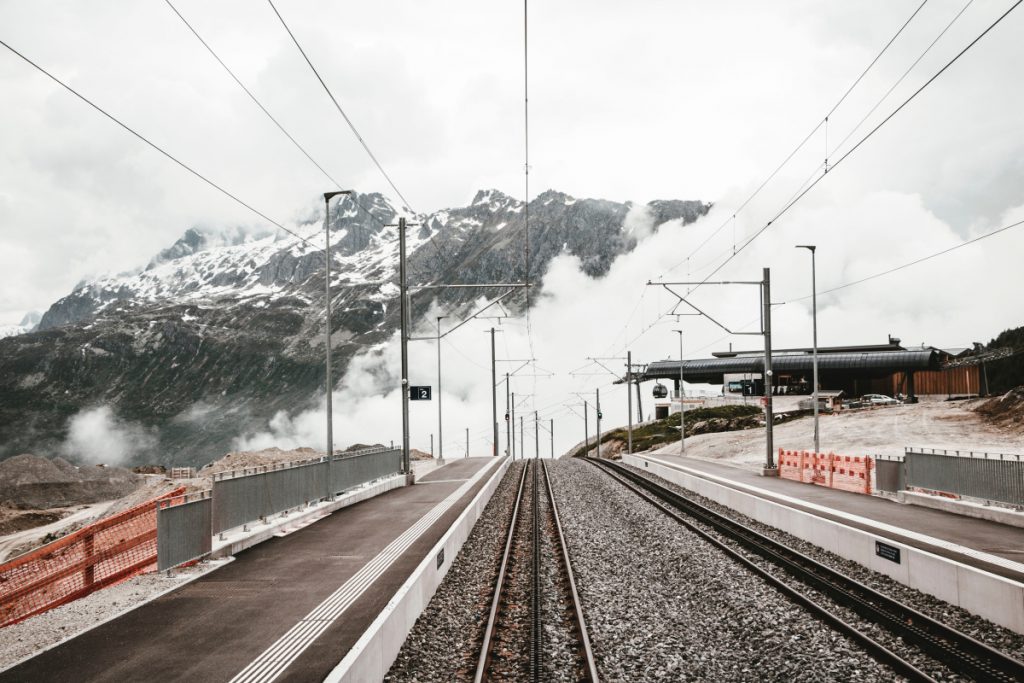
2 responses to “Amazing nonlinear behaviour of droppers in the catenary system”
[…] be designed to reduce the wave reflection from boundaries and improve the contact quality (this article has some […]
Glad i found your blog, the internet has revolutionised the way we learn and now it is changing the way write